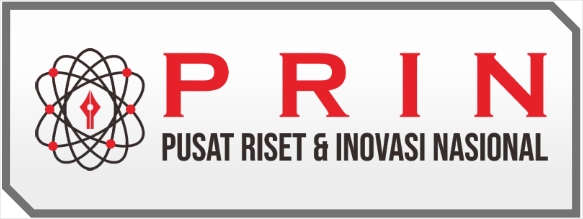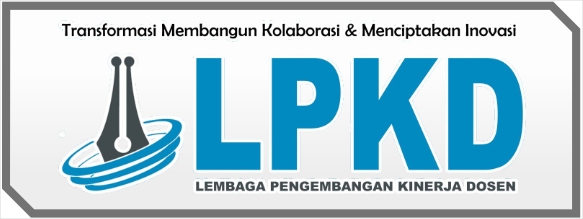Keragaman Konsumsi Pangan Dan Status Gizi Remaja Putri Yang Tinggal Dikos-Kosan
DOI:
https://doi.org/10.55606/jikg.v1i3.1392Keywords:
Diversity of Food Consumption, Nutritional Status (BMI/A, LiLA), Young WomenAbstract
Background: The burden of malnutrition in Indonesia is quite large, with more than a quarter of the adolescent population aged 16-18 years, 27 percent experiencing stunting and 8 percent being underweight, the prevalence of anemia in young women aged 13-18 years is 22.7 percent. The highest prevalence of chronic energy deficiency (CED) in women of childbearing age is experienced by adolescents aged 15-19 years, reaching 36.3%. Nutritional problems in adolescents have serious implications for the health of young people, affecting the well-being of current and future generations, as well as the economy and health of countries. In particular, the nutritional status of adolescent girls is closely related to pregnancy outcomes and the health and survival of mothers and children.
Objective: To identify the diversity of food consumption and nutritional status of young women who live in boarding houses
Methods: This study is an analytic observational study with a cross-sectional design that aims to identify the diversity of food consumption and nutritional status of female adolescents living in boarding houses. The sample in this study were young women who had just entered higher education at the age of 18-19 years, who lived in boarding houses, totaling 49 people. The diversity of food consumption was identified using the Semi Food Frequency Questionnaire (FFQ). Nutritional status was assessed based on body mass index and upper arm circumference.
Results: The diversity of food consumption of respondents was low at 46.9%, the nutritional status based on BMI was mostly in the normal category, namely 71.42%, the nutritional status based on the LiLA category was lacking, namely 46.93%, there was no relationship between BMI and diversity in food consumption (P Value 0.13, but there is a significant relationship between the diversity of food consumption and LiLA (P Value 0.02).
Conclusion: Diversity in food consumption is low and there are nutritional problems in young women living in boarding houses.
References
WHO (2006) Adolescent Nutrition: A Review of the Situation in Selected South-East Asian Countries. SEA-NUT-163. Regional Office for South East Asia, New Delhi.
United Nations Children’s Fund. 2021. Social and Behavioural Change Communication Strategy: Improving Adolescent Nutrition in Indonesia, UNICEF, Jakarta.
Riset Kesehatan Dasar (Riskesdas) (2018). Badan Penelitian dan Pengembangan Kesehatan Kementerian RI tahun 2018.
Sulistyoningsih haryani. 2011. Gizi untuk Kesehatan Ibu dan Anak. Yogyakarta: Graha Ilmu.
Syeda Saima Alam, Md Nahian Rahman, Md Ahad Mia, Md Monoarul Haque and Khaleda Islam. Dietary Diversity and Nutritional Status of Adolescent Girls in Selected Urban Slum of Dhaka City in Bangladesh. Nutrition & Food science intenational Journal
FAO, FHI 360. 2016: Minimum dietary diversity for women: a guide for measurement.
Nithya DJ, Bhavani RV. Dietary diversity and its relationship with nutritional status among adolescents and adults in rural India. J Biosoc Sci. 2018;50:397-413. [PubMed] [Google Scholar]
Modjadji P, Molokwane D, Ukegbu PO. Dietary diversity and nutritional status of preschool children in North West Province, South Africa: a cross sectional study. Children. 2020;7:174. [PMC free article] [PubMed] [Google Scholar]
Michael Akenteng Wiafe,1 Charles Apprey,2 and Reginald Adjetey Annan2. Dietary Diversity and Nutritional Status of Adolescents in Rural Ghana.National Library Of Medicine: PubMed Central. Nutr Metab Insights. 2023; 16: 11786388231158487
UNICEF.2018. Undernutrition contributes to nearly half of all deaths in children under 5 and is widespread in Asia and Africa
Badan Pusat Statistik. ‘Laporan Sensus Penduduk’, BPS, Jakarta, 2020.
Das JK, Salam RA, Thornburg KL, Prentice AM, Campisi S, Lassi ZS, Koletzko B, Bhutta ZA (2017) Nutrition in adolescents: physiology, metabolism, and nutritional needs. Ann N Y Acad Sci 1393(1):21–33. https://doi.org/10.1111/nyas.13330
Edith J. M. Feskens, Regan Bailey, Zulfiqar Bhutta, Hans-Konrad Biesalski, Heather Eicher-Miller, Klaus Krämer, Wen-Harn Pan & James C. Griffiths. 2022. European Journal of Nutrition volume 61, pages1–23 (2022)
Peraturan Menteri Kesehatan Republik Indonesia Nomor 41 Tahun 2014 Tentang Pedoman Gizi Seimbang.(Permenkes, 2014)
Adeleye Abiodun Adeomi, Adesegun Fatusi, Kerstin Klipstein-Grobusch. Food Security, Dietary Diversity, Dietary Patterns and the Double Burden of Malnutrition among School-Aged Children and Adolescents in Two Nigerian States..earch for Articles: Journals Nutrients 2022, 14(4), 789; https://doi.org/10.3390/nu14040789
Demsa S, Nur’Aini. Kehamilan Usia Remaja Prakondisi Dampak Status Gizi terhadap Berat Lahir Bayi di Kabupaten Rejang Lebong Propinsi Bengkulu. Artikel Fakultas Kesehatan Masyarakat Universitas Jember. 2013.
Sayogo S. Penilaian Status Gizi Individual dalam Sastromidjo S. Pegangan Penatalaksanaan Nutrisi Pasien, Perhimpunan Dokter Gizi Medik Indonesia. Jakarta. 2002.
Mukhlidah Hanun Siregar1, Hafifatul Auliya Rahmy .2022. Kecukupan konsumsi buah dan sayur pada remaja pada masa pandemi covid-19 berdasarkan faktor demografi. Hearty jurnal kesehatan masyarkat: Vol. 10No. 2, Agustus2022, Hal. 79-88 (Mukhlidah Hanun Siregar1.2022).
Nathan Isabirye, ,Justine Nnakate Bukenya, , Mary Nakafeero, Tonny Ssekamatte, David Guwatudde & Wafaie Fawzi. Dietary diversity and associated factors among adolescents in eastern Uganda: a cross-sectional study. BMC Public Health volume 20, Article number: 534 (2020)
Alkerwi A. Diet quality concept. Nutrition. 2014 Jun;30(6):613–8.
Supariasa IDN, Dkk. 2001. Penilaian Status Gizi. Jakarta: EGC.
Putri Ronitawati1 , Nazhif Ghifari1 , Rachmanida Nuzrina1 , Putri Nurhasanah Yahya. Analisis Faktor-Faktor Yang Berhubungan Dengan Kualitas Konsumsi Pangan Dan Status Gizi Pada Remaja Di Perkotaan. Jurnal Sains Kesehatan Vol. 28 No. 1 April 2021
Annisa Restu Rofiana, Siti Fatimah Pradigdo Dina Rahayuning Pangestuti .2021. Hubungan Keragaman Pangan dengan Kecukupan Gizi dan Status Gizi Ibu Menyusui di Daerah Pertanian Kecamatan Karangreja Kabupaten Purbalingga. Media Kesehatan Masyarakat Indonesia: Journal Diponegoro University
Cahyaning RCD, Supriyadi S, Kurniawan A. Hubungan Pola Konsumsi, Aktivitas Fisik dan Jumlah Uang Saku dengan Status Gizi pada Siswa SMP Negeri di Kota Malang Tahun 2019. Sport Sci Heal. 2019;1(1):22–7.)
Kementerian Kesehatan RI.2020. Profil Kesehatan Indonesia Jakarta. Kemenkes RI (Terdapat di https://pusdatin.kemkes.go.id/folder/view/01/ structure -publikasi-pusdatin-profil-kesehatan.html)
Manullang, nelly lestari and febry, fatmalina . 2020. Gambaran pola makan remaja kurang energi kronis (kek) di desa talang aur wilayah kerja puskesmas talang aur kabupaten ogan ilir
Ananda, Yusring Sanusi Baso. 2022. Healthy Hidayanty Providing Education Chronic Energy Deficiency (CED) Uses WebBased She Smart to Improve Knowledge, Attitudes, and Practice in Adolescent Girls Journal of Health & Medical Sciences, 5(1), 56-62. https://doi.org/10.21744/ijhms.v5n1.1833
Nathan Isabirye, ,Justine Nnakate Bukenya, , Mary Nakafeero, Tonny Ssekamatte, David Guwatudde & Wafaie Fawzi. Dietary diversity and associated factors among adolescents in eastern Uganda: a cross-sectional study. BMC Public Health volume 20, Article number: 534 (2020).
Downloads
Published
How to Cite
Issue
Section
License
Copyright (c) 2023 Retni Retni, Mariza Arfianti

This work is licensed under a Creative Commons Attribution-ShareAlike 4.0 International License.


















